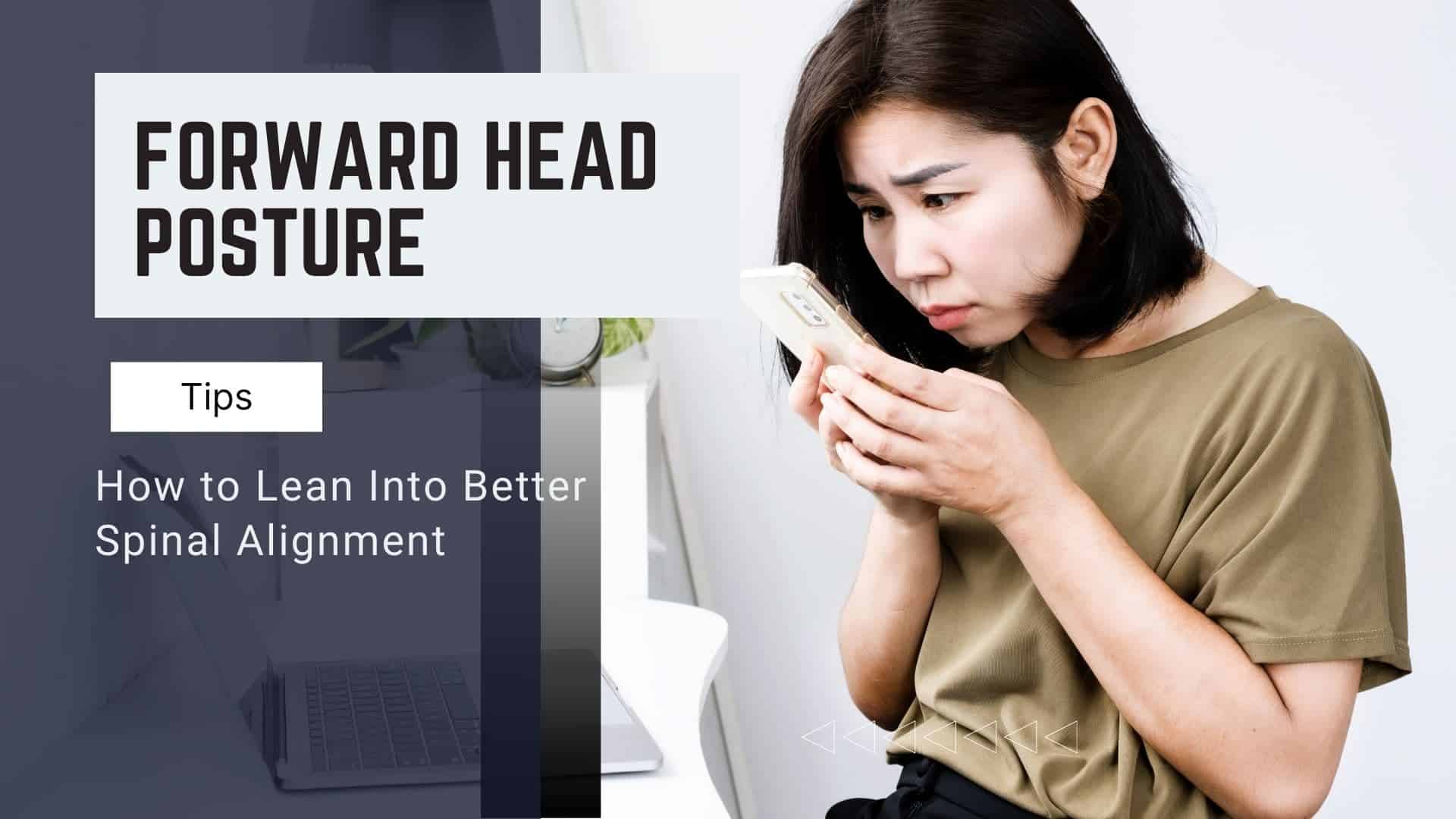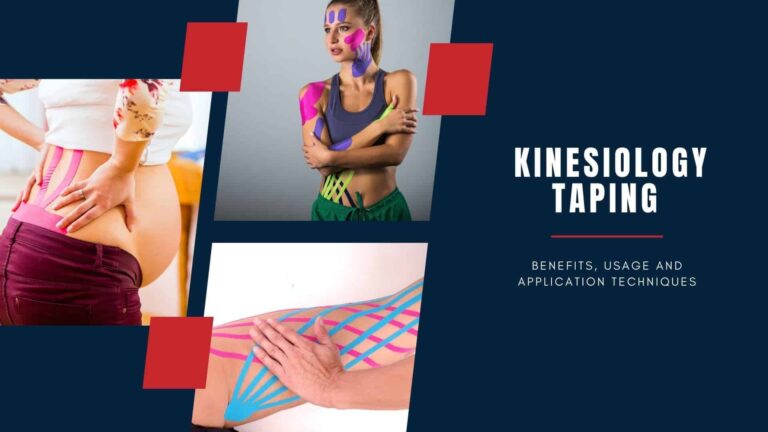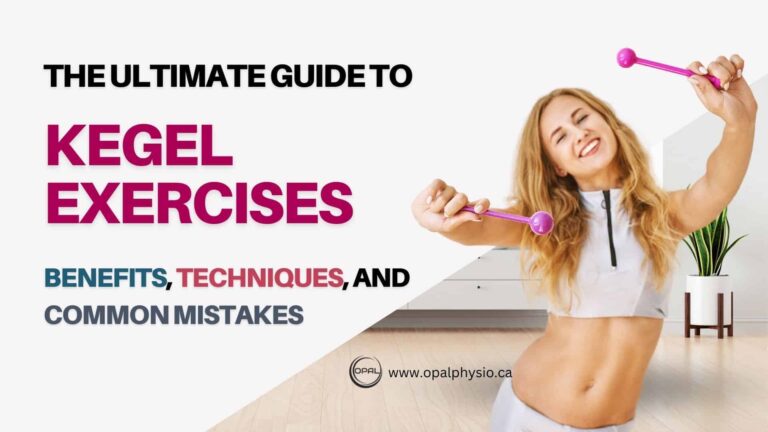Forward Head Posture: How to Lean Into Better Spinal Alignment
There’s a new postural defect arising from our modern lifestyles, and it’s already reached 86.8% of the population. Forward head posture is a leading cause of neck pain that simply must go. Here’s a guide on what it is, where it comes from, and how to fight back.
Summary
- Learn to identify poor posture easily.
- Practice avoiding habits that can lead to pain and injury.
- Enjoy a free training program to build attractive and essential posture in protecting your head and neck.
Identifying factors
Forward Head Posture (FHP) is most easily recognizable by the anterior translation of the ears over the shoulder through the sagittal plane. This means that from a side view, you will notice the visible ear is significantly in front of the shoulder, as opposed to its natural orientation, which is vertically in line with the shoulder.
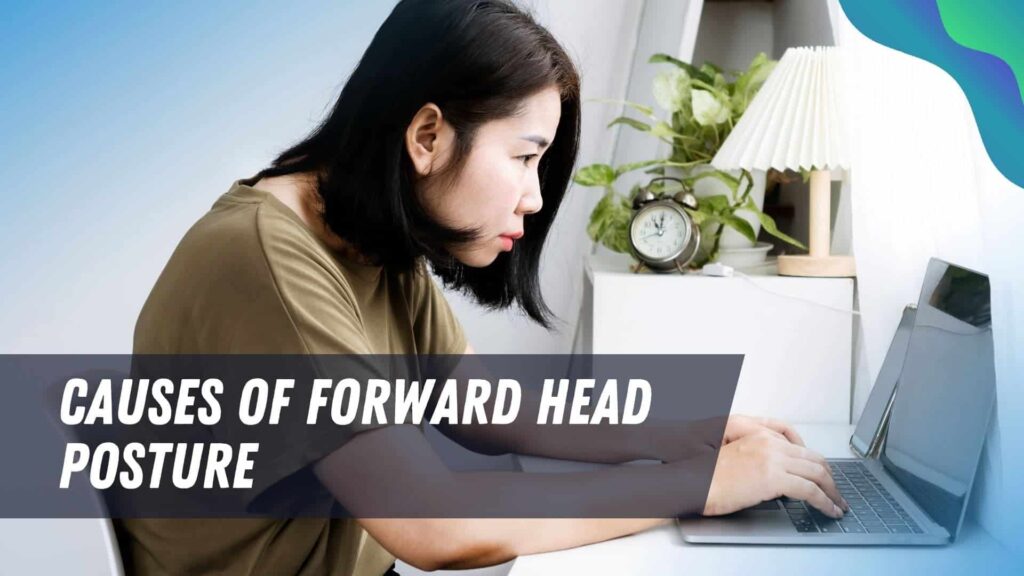
Causes of forward head posture
Unfortunately, forward head posture is so prevalent in today’s population because it’s commonly provoked by excessive use of computers and smartphones.
Usage of these devices often contributes to forward-leaning and slouching because we are concentrated on a close frontal focal point at chest level.
With increasing daily screen time in both our work and leisure, this factor heavily correlates with the increase in FHP prevalence.
Ergonomics experts always recommend desktop computers over laptops for daily use. The detached screen and keyboard allow for further distance between the body and the screen and a viewing angle that doesn’t require the user to look downward constantly.
Learn more about posture correction and ergonomics.
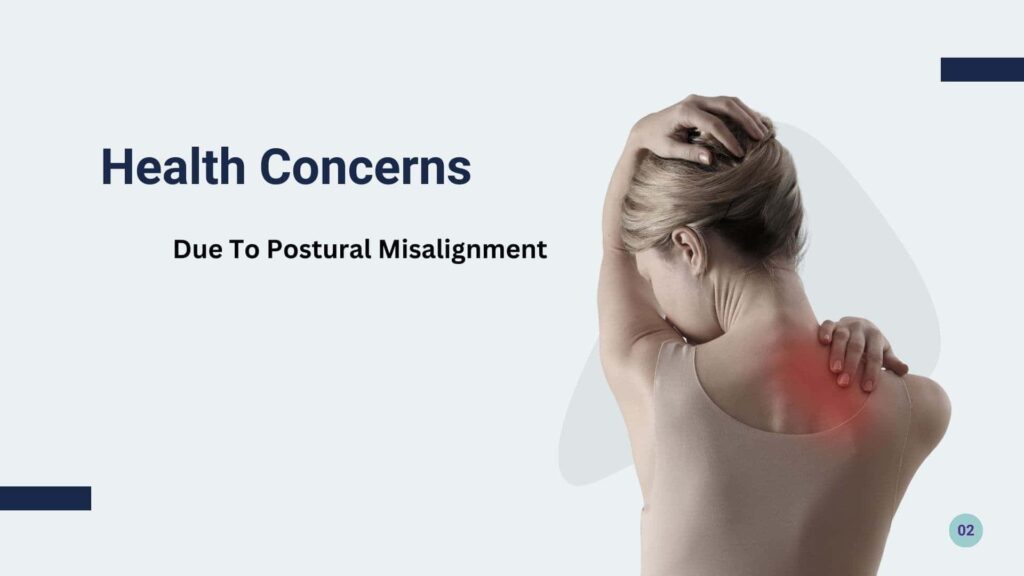
Health concerns
Under the skin, this postural misalignment causes the cervical spine vertebrae to be translated forward and hyperextended. This combination causes stretching of the muscles at the back of the head and neck and compression of those hyperextended cervical vertebrae.
Both of these conditions are likely to cause neck pain or lead to neck pain in the future if the posture is not corrected. Additionally, prolonged deviation from the natural position of these bones and muscles can cause dizziness as an unsavoury side effect.
Forward head posture also has significant negative effects on physical performance. Take a look at this recent systemic review, which outlines the strong evidence for FHP shifting our natural centre of gravity, impairing balance during physical activity, and even dampening cervical proprioception.
With the head roughly ⅙ of a person’s body weight, it’s crucial to normal movement that it is appropriately aligned with the spine. Combining decreased balance and unnaturally stretched muscles at the back of the head and neck, individuals with FHP are more vulnerable to serious injury.
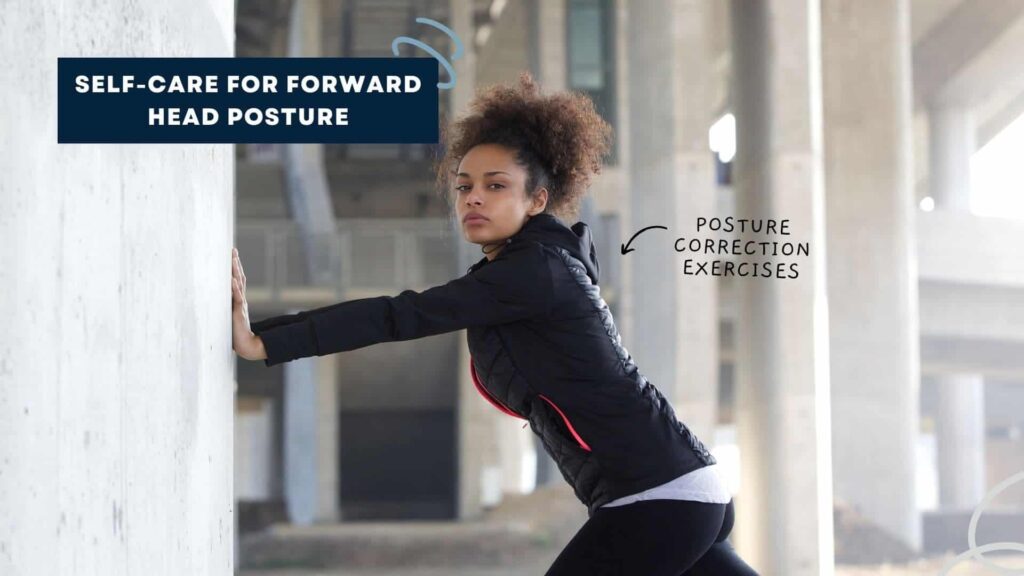
Self-care for forward head posture
Several methods are available to protect your body from developing FHP or reduce already present symptoms.
This section will cover exercises you can do at home and work to strengthen your body against forward head posture using a kinesiology approach naturally. As a bonus, these exercises can also reduce headaches!
Current findings in treating FHP support increasing mobility in the thoracic spine combined with cervical deep neck flexor strengthening.
The research shows treating the upper thoracic spine can provide fast-acting results while activating the deep neck flexors will provide lasting control over your posture.
With that being said, here is a mini-training program targeting some of the most essential aspects of forward head posture correction:
Standing Thoracic Stretch
- Stand tall with feet shoulder-width apart, eyes looking straight ahead.
- Bring your hands behind your back and interlace your fingers.
- Push your hands back behind you, extending your arms. At the same time, push your chest forward and upward.
- Roll your shoulders back and down.
- Hold the position for 10-30 seconds, depending on your comfort level, breathing regularly throughout the stretch.
Seated Thoracic Extension
- Sit tall, planting your feet on the floor.
- If your chair has a tall backrest, place a rolled towel or similar support between the backrest and your upper back. (If your chair has a short backrest, you may skip this step.)
- Place your hands on the back of your head with interlaced fingers, then point your elbows forward.
- Lean back over the towel or short backrest, letting your gaze turn up toward the ceiling.
- Hold the position for 10-30 seconds, depending on your comfort level, breathing regularly throughout the stretch.
*If using a towel, you may adjust the position up or down to give you a more comfortable stretch. A good starting landmark is just below the level of the shoulders.
Cervical Retraction
- This may be performed seated or standing. Begin looking forward with shoulders rolled down and back.
- Tuck in your chin, dropping your gaze.
- Bring back your head, imagining someone gently pulling your ears from behind.
- Hold the position for 10-20 seconds, depending on your comfort level, breathing regularly throughout the stretch.
Seated Cervical Extension
- Sit tall, planting your feet on the floor. Lean back in your seat.
- Place your hands on the back of your head with interlaced fingers, gently supporting the head.
- Tilt your head back, lifting your gaze toward the ceiling. Maintain regular breathing.
- Once you can feel a comfortable stretch, slowly turn your head slightly left, then right. Let your eyes follow your head movements.
- Slowly return to the starting position.
These exercises can be performed any number of times throughout the day. Faster and more apparent results can be achieved by doing the exercises more frequently.
A good starting goal is to do each of the four exercises for two minutes per day (4 exercises x 2 minutes = only 8 minutes of your day needed) five times per week.
By adding this slight adaptation to your lifestyle, you are already investing 40 minutes per week into improving your health. You will enjoy a healthier, more attractive posture while preventing injury and chronic pain.
Book a kinesiology session today for a deeper understanding and in-depth training specific to your personal lifestyle. We strive to serve you better health!

